Summary Hijacking Fatalities 20 Aircraft type Boeing 747-121 Date 5 September 1986 Injuries (nonfatal) 120 | Crew 19 Survivors 359 Passengers count 379 Passenger count 360 | |
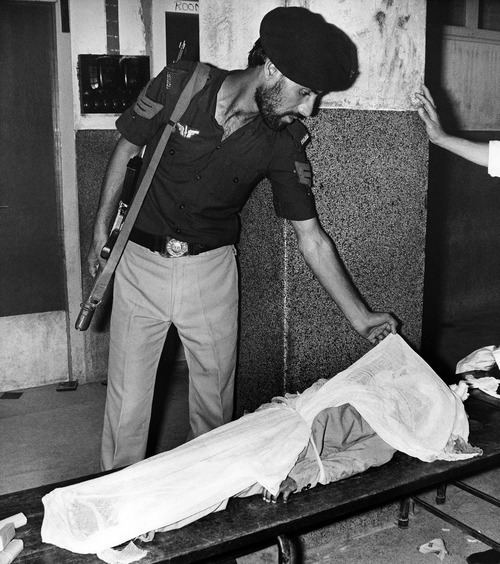 | ||
Operator Pan American World Airways Similar Pan Am Flight 103, TWA Flight 847, Iraqi Airways Flight 163, China Airlines Flight 334, Dawson's Field hijackings | ||
Pan Am Flight 73, a Pan American World Airways Boeing 747-121, was hijacked on September 5, 1986, while on the ground at Karachi, Pakistan, by four armed Palestinian men of the Abu Nidal Organization. The aircraft, with 360 passengers on board, had just arrived from Sahar International Airport in Mumbai, India, and was preparing to depart Jinnah International Airport in Karachi for Frankfurt Airport in Frankfurt am Main, West Germany, ultimately continuing on to John F. Kennedy International Airport in New York City, United States. A June 2001 grand jury charged that the militants were planning to use the hijacked plane to pick up Palestinian prisoners in both Cyprus and Israel.
Contents
- Pan am flight 73 highacking in karachi pakistan on 5 september 1986
- Hijacking at Karachi Pakistan
- Zayd Hassan Abd Al Latif Masud Al Safarini takes control
- Assault
- Passengers
- Trial and sentencing
- Libyan involvement and legal action
- Reward and reported killing of accused
- Aircraft
- In popular culture
- References
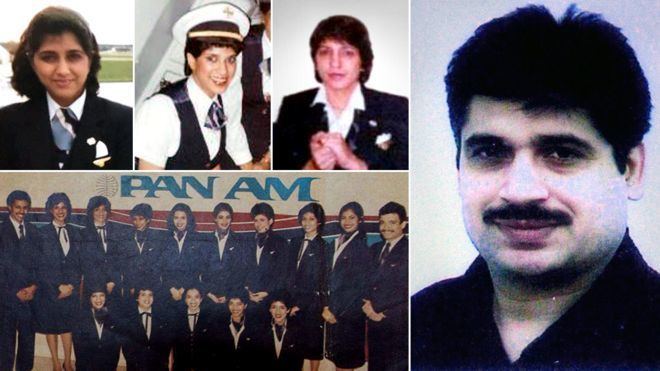
Twenty of the passengers were killed during the hijacking, twelve of them were from India and the rest were from the United States, Pakistan, and Mexico. All the hijackers were arrested and sentenced to death in Pakistan; however, the sentences were later commuted to life in prison. Neerja Bhanot, head attendant on the flight, gave her life up to save 359 others. She first hid the passports of American passengers so that they could not be distinguished from non-Americans. This was because the hijackers decided to take the passports of all passengers in order to identify the American citizens present and make them targets. Seventeen hours later, the hijackers opened fire on passengers and planted explosives, at which point Bhanot opened an emergency exit to let the passengers through. She was fatally shot while shielding 3 children from the bullets of the hijackers.
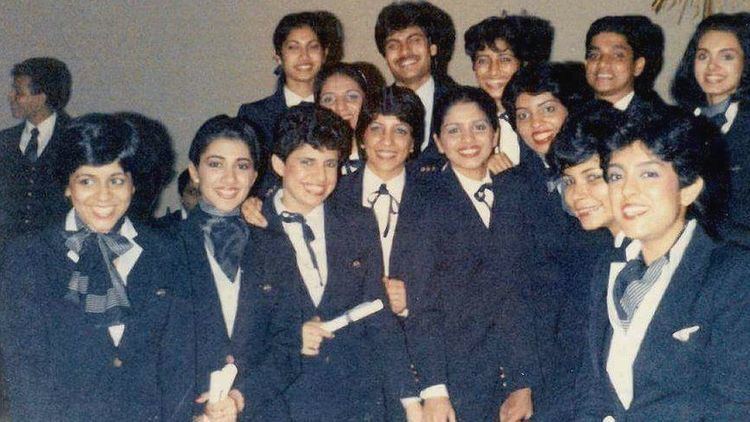
Pan am flight 73 highacking in karachi pakistan on 5 september 1986
Hijacking at Karachi, Pakistan
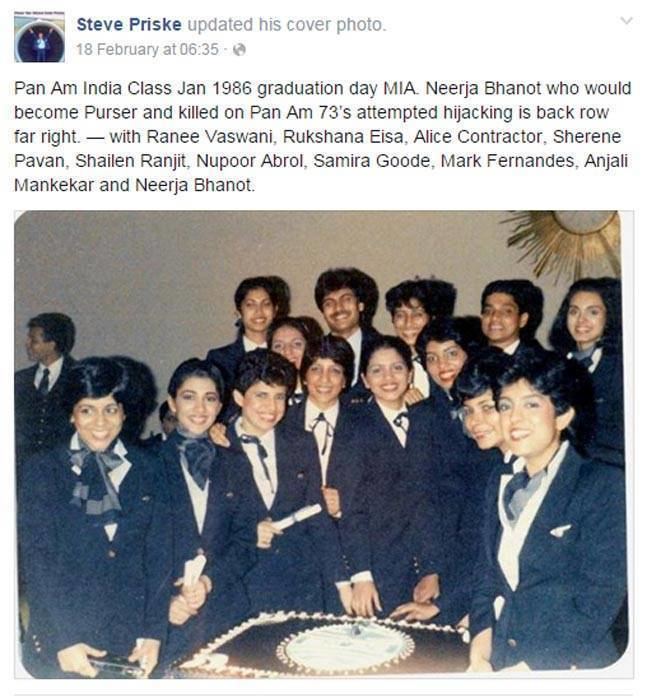
The incident began as passengers boarded the Frankfurt-bound aircraft in Karachi. A subsequent CIA investigation revealed that the hijack occurred despite the presence of armed agents near the aircraft. The four hijackers were dressed as Karachi airport security guards and were armed with assault rifles, pistols, grenades, and plastic explosive belts. At about 06:00 local time, the hijackers drove a van that had been modified to look like an airport security vehicle through a security checkpoint up to one of the boarding stairways to Pan Am Flight 73.
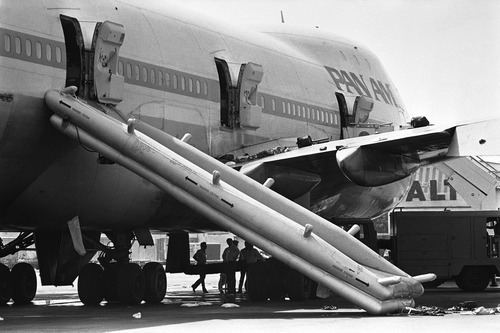
The hijackers stormed up the stairways into the plane, fired shots from an automatic weapon, and seized control of the aircraft. Neerja Bhanot was able to alert the cockpit crew using the intercom, allowing the pilot, co-pilot, and flight engineer to flee through an overhead hatch in the cockpit, preventing the hijackers forcing the plane to take off. The plane was effectively grounded at the airport.
Zayd Hassan Abd Al-Latif Masud Al Safarini takes control
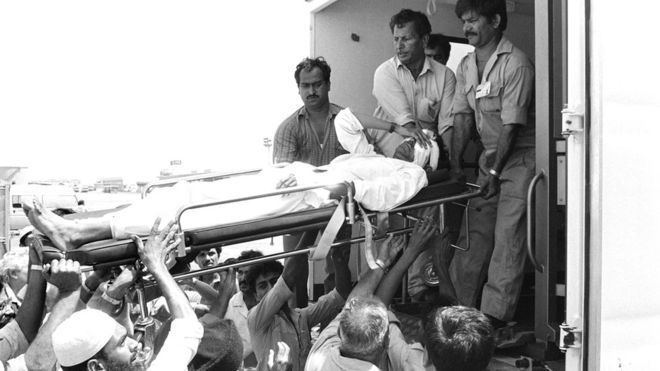
Within a short time after seizing control of the aircraft, hijacker Zayd Hassan Abd Al-Latif Masud Al Safarini realized that the crew had escaped off the plane and therefore he would be forced to negotiate with officials. First and business class passengers were ordered to go towards the back of the plane. At the same time, passengers at the back of the plane were ordered forward. Since the plane was nearly full, passengers sat down in the aisles, galleys and door exits. At approximately 10:00, Safarini then went through the plane and arrived at the seat of Rajesh Kumar, a 29-year-old Indian American resident of California who had recently been naturalized as an American citizen. Safarini ordered Kumar to come to the front of the aircraft, to kneel at the front doorway of the aircraft, and to face the front of the aircraft with his hands behind his head. He negotiated with officials, in particular Viraf Daroga, the head of Pan Am's Pakistan operation, that if the crew wasn't sent on the plane within 15 minutes then Kumar would be shot. Shortly thereafter, Safarini became impatient with the officials and grabbed Kumar and shot him in the head in front of witnesses both on and off the aircraft. Safarini then heaved Kumar out of the door onto the tarmac below. Pakistani personnel on the tarmac reported that Kumar was still breathing when he was placed in an ambulance, but he was pronounced dead on the way to the hospital in Karachi.
Safarini then joined the hijackers and ordered the flight attendants to collect the passports of all passengers. The flight attendants complied with this request, risking their own lives. During the collection of the passports, one stewardess, Neerja Bhanot, the senior attendant, believed passengers with American passports would be singled out by the hijackers. She and some other flight attendants under her leadership proceeded to hide some of the American passports under seats, and dumped the rest down a rubbish chute.
After the passports had been collected one of the crew members came onto the intercom and asked for Michael John Thexton, a British citizen, to come to the front of the plane. He then went through the curtain into the front of the plane where he came face to face with Safarini who was holding Thexton's passport. He then asked Thexton if he was a soldier and if he had a gun, Thexton replied "No". He then ordered Thexton onto his knees. Safarini then told the officials that if anyone came near the plane that he would go on to kill another passenger. Viraf Daroga then told Safarini that there was a crew member on board who was able to use the cockpit radio and asked him to negotiate through radio. Safarini then went back to Thexton and asked him whether he would like a drink of water, to which Thexton replied "Yes." Safarini also asked Thexton if he was married, and claimed he did not like all this violence and killing and said that the Americans and Israelis had taken over his country and left him unable to lead a proper life.
Then one of the hijackers ordered Thexton back through the plane to a seat. The hijack stalemate continued on into the night. During the stalemate, flight attendant Neerja Bhanot secretly removed a page from her manual that explained all the procedures for the 3R aircraft door and placed it inside of a magazine and then handed it to the passenger near the door. She instructed him to "read" the magazine and then close it up, but refer to it later if necessary. This page included information on how to open the exit door and deploy the slide down to the apron. About 21:00 the auxiliary power unit shut down, all lighting turned off, and emergency lights came on. Passengers at the front were ordered toward the back, while passengers at the back were ordered forward. Since the aisles were already full of passengers, those passengers standing just sat down.
With the plane out of power and sitting in near darkness a hijacker at the 1L door said a prayer and then aimed to shoot at the explosive belt the other hijacker at the 1R door was wearing. The intent was to cause an explosion massive enough to kill all passengers and crew on board, as well as themselves. Since the cabin was so dark, the hijacker missed, causing only a small detonation. Immediately the hijackers began shooting their weapons into the cabin at passengers and attempted to throw their grenades. Yet again the lack of light caused them to not pull pins fully and create small explosions. Ultimately, bullets created most damage since each bullet would bounce off the aircraft and create crippling shrapnel. The flight attendant at the 3L door decided it was time to take action and opened the door; although the slide did not deploy, several passengers and crew jumped down the fifteen feet (or 6m/20 ft. to the tarmac. The passenger that was near 3R had read the page the flight attendant earlier gave him and was able to successfully open that door. It was the only door opened to have the slide deploy. Ultimately this slide allowed for more passengers to evacuate safely and without injuries. Neerja Bhanot could have been the first to jump out and run to safety when she opened an exit, but she decided not to and assisted most of the passengers to escape from the flight, then she laid down her life shielding three unaccompanied American and Indian children from the bullets fired by the terrorists. Twenty passengers were killed and over a hundred were injured.
Assault
Pakistan quickly sent in the Pakistan Army's Special Services Group (ssg) commandos and Pakistan Rangers were put on high-alert. The 17-hour long hijacking came to an end when the hijackers opened fire on the passengers at 21:30 Pakistan Standard Time, but soon ran out of ammunition, resulting in some passengers fleeing the aircraft through the aircraft's emergency exits. The SSG responded by storming the aircraft and seizing the hijackers. The SSG commando unit was headed by Brigadier Tariq Mehmood and the Shaheen Company of the SSG's 1st Commando Battalion carried out the operation.
Passengers
The 379 total passengers plus crew on Pan Am 73 were citizens of 14 different countries. Citizens of India represented roughly 25% of the people on board the flight, and 60% of those killed.
Trial and sentencing
On July 6, 1988, five Palestinian men were convicted in Pakistan for their roles in the hijacking and murders and sentenced to death: Zayd Hassan Abd al-Latif Safarini, Wadoud Muhammad Hafiz al-Turki, Jamal Saeed Abdul Rahim, Muhammad Abdullah Khalil Hussain ar-Rahayyal, and Muhammad Ahmed al-Munawar. The sentences were later commuted to life in prison.
Safarini was handed over to FBI from a prison in Pakistan in September 2001. He was taken to the United States where on May 13, 2005 he was sentenced to a 160-year prison term. At the plea proceeding, Safarini admitted that he and his fellow hijackers committed the offenses as members of the Abu Nidal Organization, also called the ANO, a designated terrorist organization.
The other four prisoners have escaped from Adiala jail Rawalpindi, reportedly in January 2008.
Libyan involvement and legal action
Libya has been accused of sponsoring the hijacking, as well as carrying out the bombings of Pan Am Flight 103 in 1988 and UTA Flight 772 in 1989.
In August 2003, Libya accepted responsibility for "the actions of its officials" in respect of the bombing Pan Am Flight 103, but was silent on the question of the Pan Am Flight 73 hijacking. Libya offered $2.7 billion USD in compensation to the families of the 270 victims of Pan Am Flight 103 and, in January 2004, agreed to pay $170 million to the families of the 170 UTA victims. The seven American UTA victims' families refused the offer and instead filed a claim for $2.2 billion against Libya. From 2004 to 2006 the U.S. and UK opened up relations with Libya, including removing sanctions and removing the country as a sponsor of terrorism.
In June 2004, a volunteer group of families and victims from the incident, Families from Pan Am Flight 73, was formed to work toward a memorial for those killed in the incident, to seek the truth behind this terrorist attack, and to hold those responsible for it accountable. On April 5, 2006, the law firm of Crowell & Moring LLP, representing the surviving passengers, estates and family members of the hijacking victims, announced it was filing a civil suit in U.S. District Court for the District of Columbia seeking $10 billion in compensatory damages, plus unspecified punitive damages, from Libya, Muammar al-Gaddafi and the five convicted hijackers. The lawsuit alleged Libya provided the Abu Nidal Organization with material support and also ordered the attack as part of a Libyan-sponsored terrorist campaign against American, European and Israeli interests.
British media that was critical of normalisation of relations between Gaddafi and the West reported in March 2004 (days after Prime Minister Tony Blair visited Tripoli) that Libya was behind the hijacking.
As of September 2015 about $700million of funds that Libya gave the USA to settle claims related to Libyan sponsored terrorism has not been distributed to families of victims who were Indian passport holders.
Reward and reported killing of accused
Zayd Hassan Abd al-Latif Safarini was extradited to the US by the Government of Pakistan. He is serving his 160-year sentence at the Federal Correctional Complex in Terre Haute, Indiana.
On December 3, 2009, the FBI, in coordination with the State Department, announced a $5M reward for information that leads to the capture of each of the four remaining hijackers of Pan Am 73, who were reported to have been released from prison in Pakistan in 2008.
One of the four, Jamal Saeed Abdul Rahim, was reported killed in a drone strike on January 9, 2010, in Pakistan. His death was never confirmed, and he remains on the FBI's Most Wanted Terrorists and Rewards for Justice lists.
During his November 9, 2015 parole hearing at the federal prison in Terre Haute, Zaid Safarini claimed to have been in touch with Jamal Rahim and the other hijackers recently - thereby suggesting that the above news report of Rahim's death was false.
Aircraft
The aircraft was a four-engined Boeing 747-121 delivered to Pan Am on 18 June 1971, with registration N656PA and named Clipper Live Yankee by the airline. It was later renamed and at the time of the incident was named Clipper Empress of the Seas. After the incident the aircraft was renamed "Clipper New Horizons". Pan Am sold the aircraft to Evergreen International in 1988 and then leased it back. The aircraft was returned by Pan Am to Evergreen in April 1991. Evergreen scrapped the aircraft the next month.
In popular culture
The film Neerja was released in 2016 depicting the hijacking and the actions of Neerja Bhanot, Senior Flight Purser and the youngest awardee of the highest Indian bravery award, Ashoka Chakra. She also received the United States Special Courage award and the Pakistani Tamgha-e-Insaaniyat.
